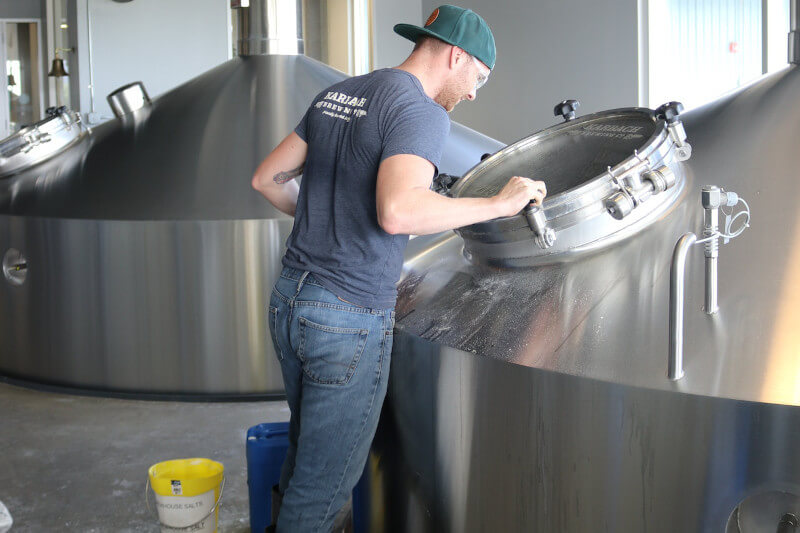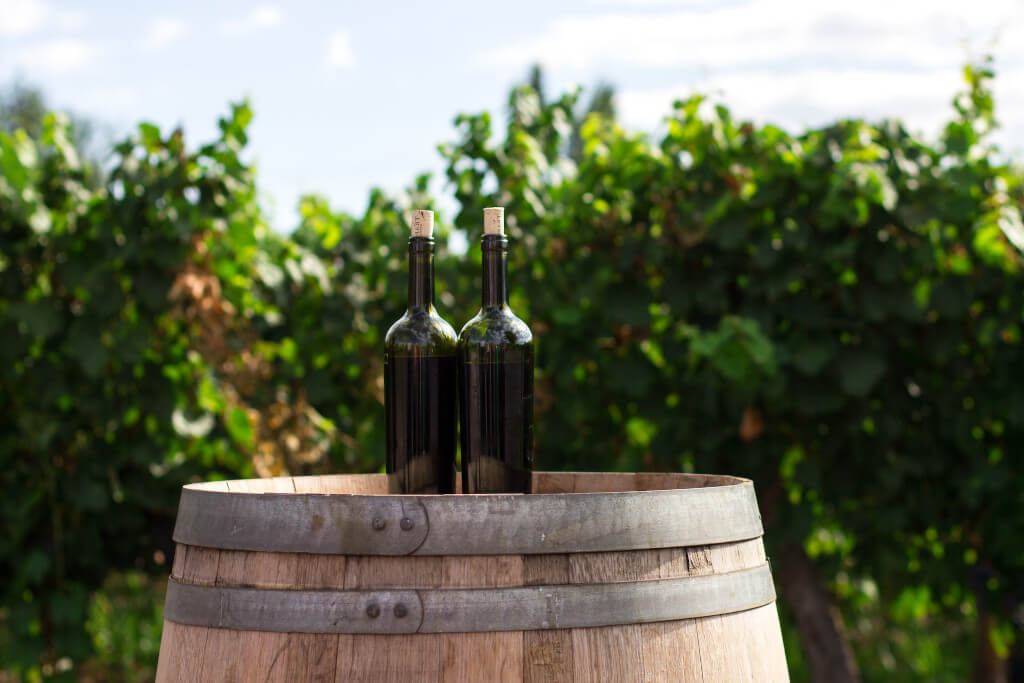Today, we’re diverting slightly from our bourbon, whiskey trail and stepping into the vineyards to uncover an interesting trend. An increasing number of wineries are turning their gaze from grapes to grain, exploring the realm of spirits.
Unpredictability VS. Predictability in Production
The charm of winemaking is its inherent unpredictability. Factors like soil conditions, weather, and seasonal changes play a significant role in determining the wine’s flavor profile. This, while being the heart of the winemaking charm, also introduces a slew of challenges. Flying Leap Vineyards & Distillery in Arizona and Sweetgrass Winery & Distillery in Maine stand as an example of wineries expanding their horizons. The primary motivation? The relatively predictable nature of spirit production compared to the myriad variables in winemaking.
Existing Knowledge, New Application
Transitioning to spirits isn’t about reinventing the wheel for wineries. They already are well-versed in regulations, processes, and storage techniques of alcoholic beverages. By entering the spirit domain, they can leverage this existing knowledge and infrastructure. The spirits world offers fewer variables and tighter control of the end product, reducing possible pitfalls that wineries often grapple with.

Wineries possess infrastructure like fermentation tanks and aging barrels, which can be used in spirit production, saving capital costs. Additionally, having a set customer base and distribution channels from the wine business can smooth out the initial challenges of entering the spirits market
Economic Safeguards and Passion Projects
Oregon’s Duck Pond Cellars’ transition to distilling highlights both the business acumen and the passion that drives such decisions. The diversification allows wineries like Ransom (Duck Pond’s acquisition) to optimize resources, especially during challenging times like the wildfire-hit 2020. Yet, it’s essential to note that for many, like Julia Cattrall of Ransom, it’s not just about numbers. The shift is also rooted in a profound passion for diverse alcoholic beverages. The sentiment is simple – if they love to drink it, they’re inclined to craft it.
While some wines need aging to develop their full character, many spirits, especially white spirits like gin or vodka, can be produced and brought to market relatively quickly. This offers a quicker return on investment, an appealing proposition for wineries.
By distilling spirits, sustainably, wineries can ensure that every part of the grape is utilized. For instance, grape skins, which might be discarded after wine production, can be used to produce brandies or grappa, contributing to sustainable practices and waste reduction. Wines, especially those from specific regions, may have seasonality in their sales, with certain varietals or styles being popular during particular times of the year. Spirits, on the other hand, can provide consistent sales throughout the year, ensuring a steadier cash flow for businesses.
Beneficial Synergies and Regional Leverage
When wineries expand into spirits, it’s not a one-way benefit. At Huber’s Orchard, Winery & Vineyards in Indiana, the production of wine and spirits complements each other. Profits from one domain fund the ventures in the other, creating a beneficial cycle.
On the regional front, Cedar Ridge Winery & Distillery recognized the potential of Iowa, a state renowned for corn production. The result? By 2021, Cedar Ridge had outpaced industry stalwarts in bourbon sales in the state. With the rising popularity of craft breweries and distilleries, consumers are now more open to exploring spirits from lesser-known producers. Wineries can capitalize on this trend, offering artisanal spirits to a market hungry for unique experiences.
There’s a Critical Financial Element to Consider
The transition from grape to grain, barrel to bottle, is one replete with monetary opportunities and challenges.
Let’s consider the capital investment. Setting up distilling infrastructure, if not already in place, demands significant financial outlay. From the purchase of pot stills and fermentation tanks to safety and storage equipment, the initial costs can be hefty. Furthermore, there’s a potential retraining overhead. Winemakers transitioning to distilling would require retraining, or new staff with distillation expertise may need to be onboarded.
However, these investments might be offset by the operational costs of distilling when compared to winemaking. Spirits, by their nature, are less vulnerable to the whims of climate and environmental factors, which sometimes wreak havoc on a year’s wine harvest. Whiskey, for instance, can be produced throughout the year, irrespective of seasons. This consistency can lead to more predictable production costs and fewer losses.
The Revenue Potential

The global spirits market, especially for boutique and craft labels, is burgeoning. Spirits often command a higher price point than wines, and premium spirits even more so. For instance, Cedar Ridge Winery & Distillery’s success story of their bourbon outselling industry stalwarts like Jim Beam and Maker’s Mark underscores the potential revenue boom. This price premium, coupled with the longer shelf life of spirits compared to most wines, could drive profitability.
Diversifying the product range can attract a broader customer base, ensuring a steady revenue stream. While a section of their wine clientele might embrace the spirits, wineries can also tap into a market segment that exclusively consumes spirits. Engaging this new segment can lead to increased sales, both from spirits and potential crossover wine purchases.
Pulling all these threads together, the financial implication for wineries moving into distilling seems to tilt favorably towards the positive side. The potential for increased revenue, combined with more predictable operational costs, points towards a strengthened bottom line. Wineries would do well to navigate this transition cautiously, ensuring they remain true to their brand ethos and maintain the trust of their loyal clientele.
Controlled Production and Novelty
The ability to maintain a controlled environment and innovate are key attractions for wineries. The Oakland Spirits Co. in California, an offshoot after a merger with Two Mile Wines, stands as an example of this pursuit of controlled innovation. The competitive wine sector led them to spirits, offering a platform for crafting unique beverages using unorthodox ingredients. Here, the stability of the spirits industry offers both creativity and reliability.
What you might be thinking at this point, is, surely wineries would have to adopt a massive brand shift or start multiple marketing campaigns to ensure that their consumers remain loyal. Well yes. As with any expansion to a brand’s portfolio, they have to adopt certain strategies to bridge the gap.
For a winery, the existing clientele, familiar with their grape-based creations, is the low-hanging fruit. However, introducing spirits to this group requires a tailored approach. Their love for wine is not a guaranteed passport to the world of spirits. Here’s how wineries can introduce spirits without jolting their wine-loving clientele:
- Educational Initiatives: Customers are more likely to appreciate and indulge in a new product when they understand it. Wineries can conduct workshops detailing the nuances of whiskey-making, drawing parallels with wine production.
- Tasting Events: An intimate evening that allows customers to taste the new spirits, guided by experts who can explain the flavors and the distillation process, can help break barriers.
- Marketing and Branding: Leveraging the brand’s story, ethos, and reputation in the wine market can be pivotal. Spirits needs to feel like a natural extension of the brand, not a disjointed venture.
- Exclusive Offers: Providing loyal customers with exclusive first tastes or discounts on the new spirits range can evoke interest.
- Feedback Channels: Open channels where customers can give feedback on the newly introduced spirits. Their insights can provide valuable data for future productions.
The most pressing question remains: Is this a smart move for wineries in today’s market? Given the saturated wine market and the growing allure of spirits, especially boutique and craft varieties, this move holds merit. By branching into spirits, wineries not only diversify their portfolio but also tap into a more predictable and controlled production line. While wine production is susceptible to numerous variables like weather, spirits offer a steadier manufacturing process.
The shift from wineries to distilling is not a mere trend but a strategic move. With an eye on stability, profit margins, and leveraging existing know-how, wineries are finding distilling an attractive frontier. As long as wineries maintain their essence, stay true to their brand, and execute a thoughtful introduction of spirits to their clientele, this venture can indeed prove to be a strategic boon in today’s wine industry market.

